Abstract
1. The output of adrenaline and noradrenaline from the adrenal medulla during asphyxia, stimulation of the splanchnic nerves or the intra-arterial injection of acetylcholine, has been investigated in foetal and new-born calves up to 3 weeks of age.
2. Between 180 days' gestation and term (∼ 281 days) the response of the foetal adrenal gland of the calf to asphyxia appeared to be independent of its nerve supply and the discharge consisted largely of noradrenaline. A similar type of discharge was obtained after the intra-arterial injection of acetylcholine, but stimulation of the splanchnic nerves resulted in only a small discharge of both adrenaline and noradrenaline.
3. Rapid changes occurred in the response of the adrenal medulla to all forms of stimulation during the first 24 hr after birth. For the first 4-6 hr the adrenal medulla was hypersensitive; thereafter the response rapidly declined and a variable period of depressed excitability followed. The changes affected the output of noradrenaline rather than that of adrenaline and were more pronounced during asphyxia or after the intraarterial injection of acetylcholine. Within 24 hr of birth the amount of noradrenaline released in response to either form of stimulation was less than 25% of that found immediately after birth.
4. During the hypersensitive phase immediately after birth splanchnic nerve activity appeared to potentiate the direct effect of asphyxia on the noradrenaline cells since the maximum output of noradrenaline was attained more rapidly and at a higher PO2 if the splanchnic nerves were intact.
5. The non-nervous direct response of the adrenal medulla to asphyxia decreased rapidly after birth and disappeared within 24 hr. It did not reappear at any age and was a feature of foetal life.
6. The recovery of the response to acetylcholine occurred between 3 and 8 days after birth with a return of the high level of noradrenaline secretion; no similar increase in the output of adrenaline occurred at this stage.
7. The response to asphyxia was not restored to the level found in the new-born calf until 2-3 weeks after birth. At this time the effect on the adrenal medulla appeared to be mediated almost entirely by the splanchnic nerves.
8. The effects of chloralose and pentobarbitone anaesthesia on the changes in the nervous response to asphyxia after birth were compared. Essentially the same pattern of changes was found with both anaesthetics although the absolute level of discharge under chloralose was greater and a considerably larger amount of adrenaline was secreted at 3 weeks of age.
9. At certain ages stimulation of the splanchnic nerves enhanced the response of the adrenal medulla to subsequent injections of acetylcholine. The noradrenaline output was only significantly increased by this procedure during the period of depressed excitability whereas the adrenaline discharge was always increased throughout the first 3 weeks of life.
10. The changes in adrenaline and noradrenaline content of the adrenal glands during the 3-week period after birth were investigated. The noradrenaline concentration was low immediately after birth during the hypersensitive phase and increased during the period of reduced sensitivity. The output of this amine was thus inversely related to its content in the adrenal gland. A similar relation did not occur with adrenaline, the concentration of which remained relatively constant during the first 3 weeks of life.
Full text
PDF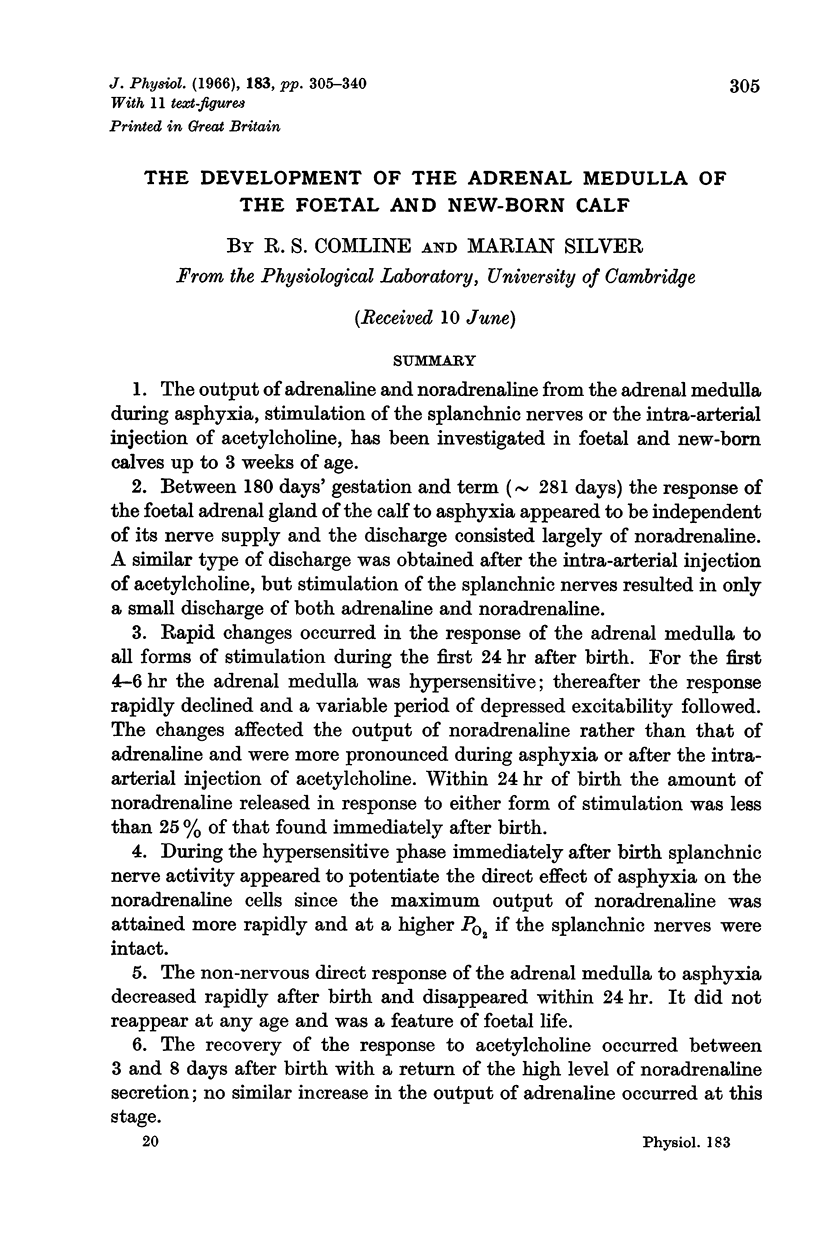
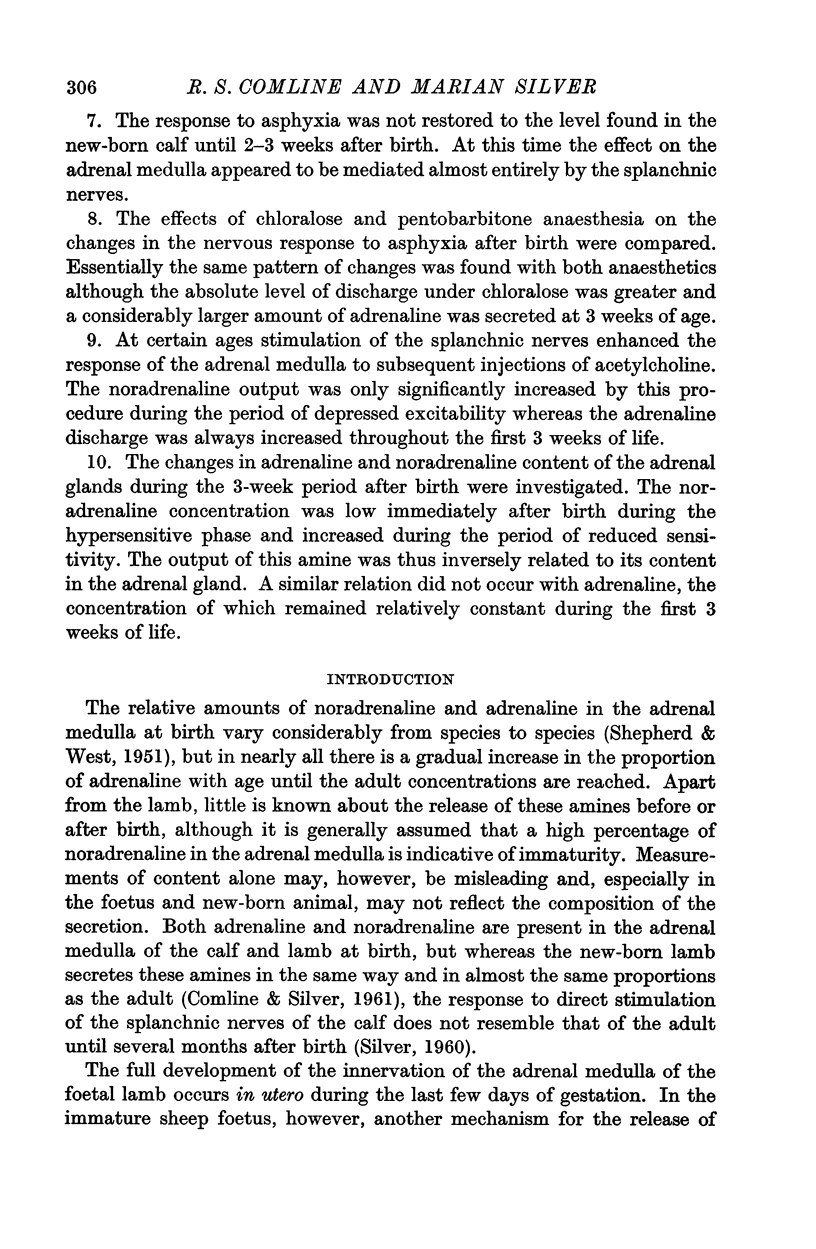
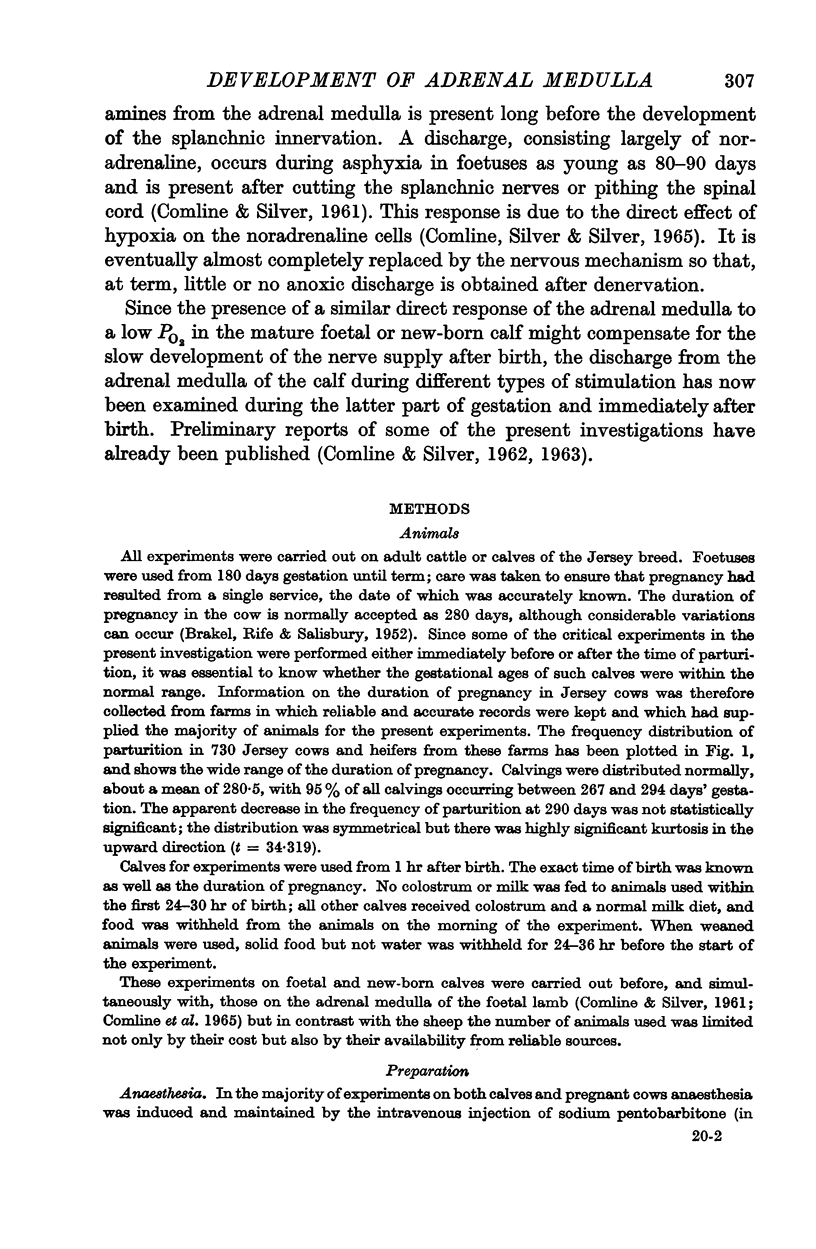
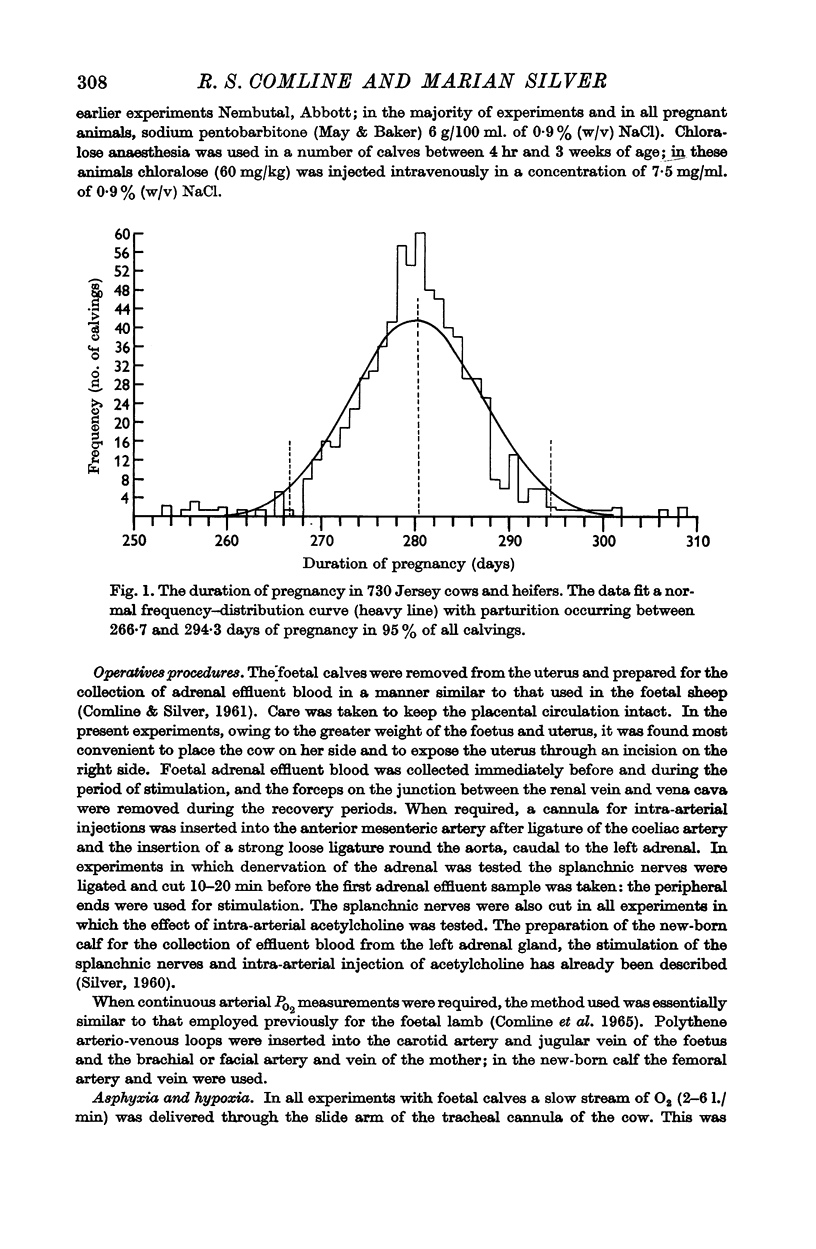
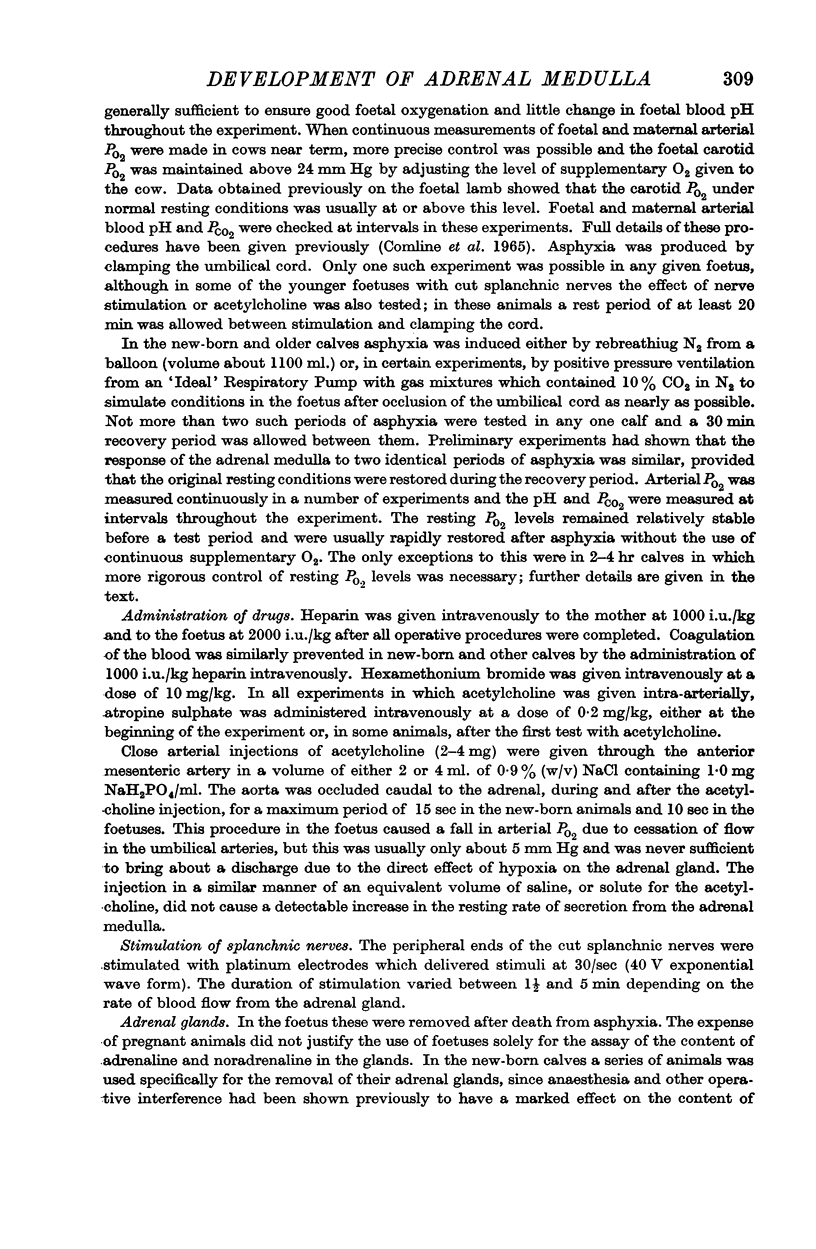
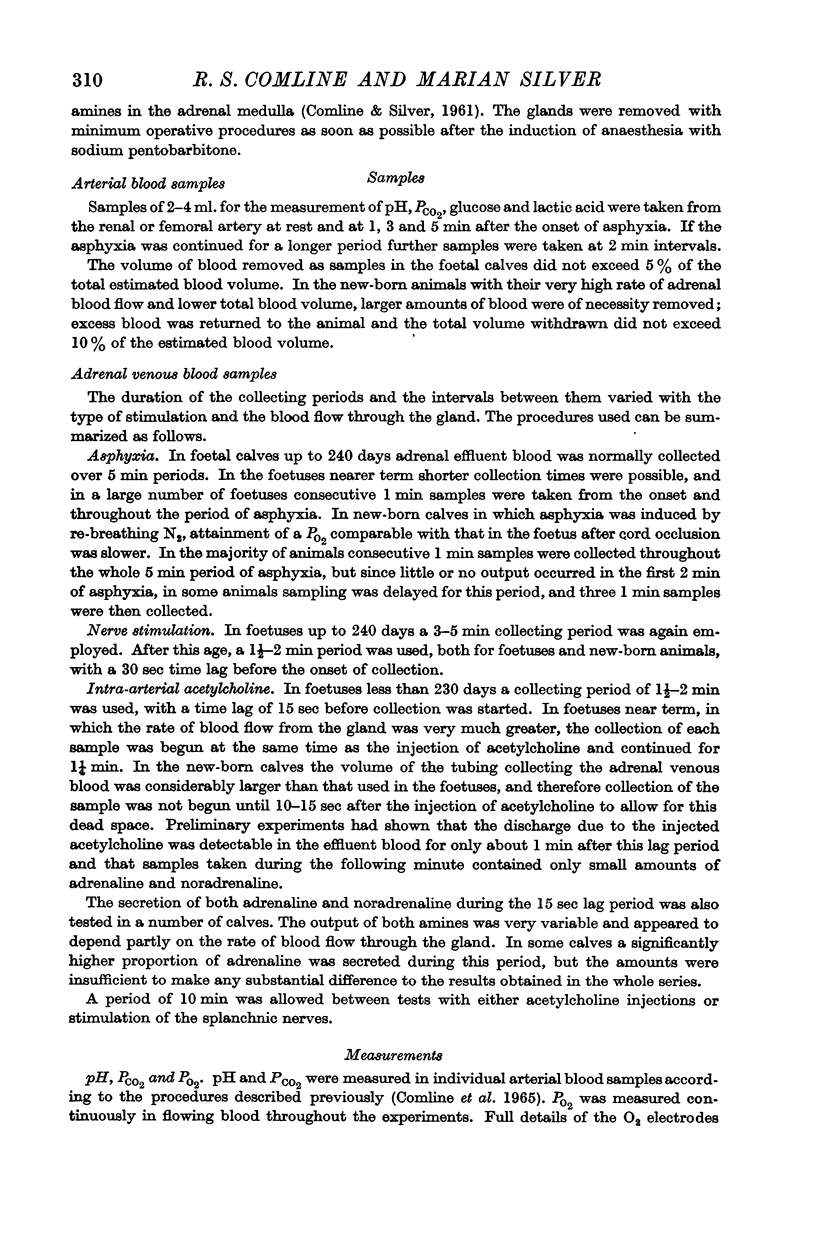
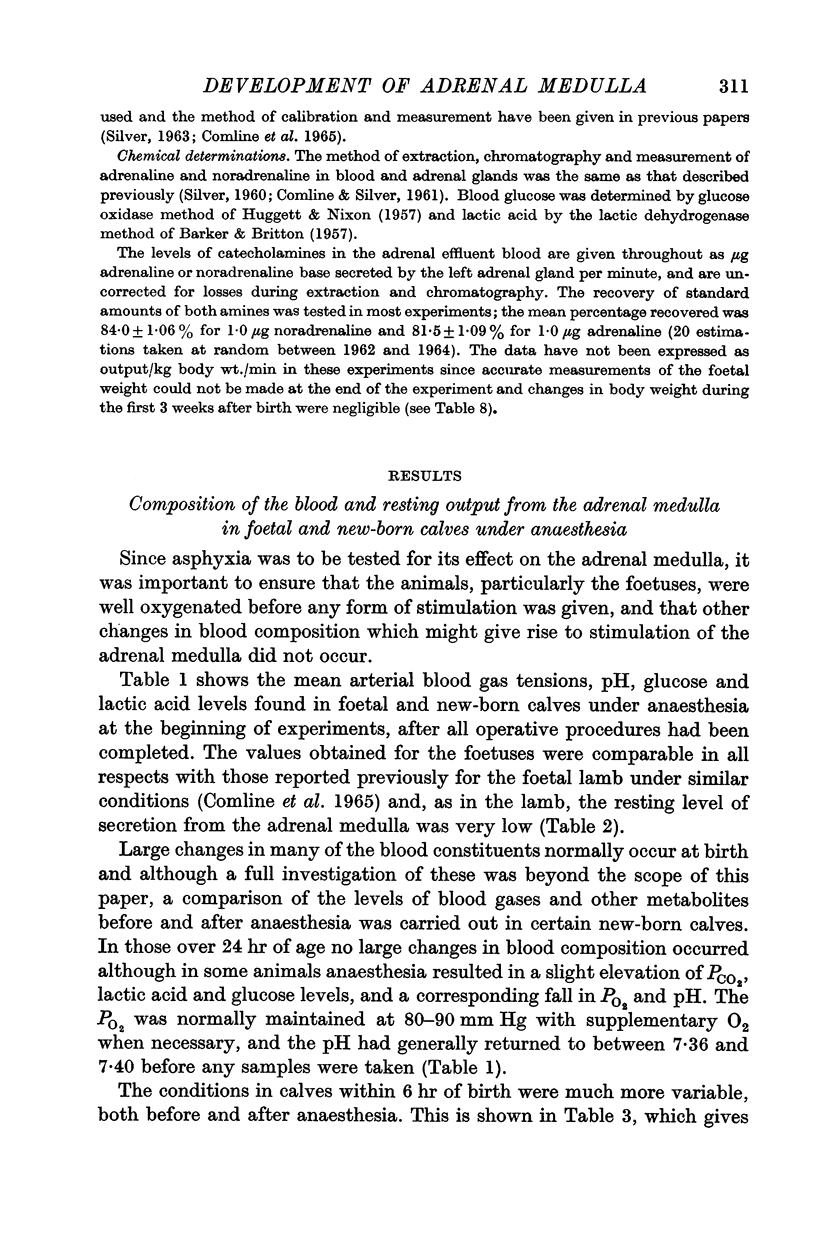
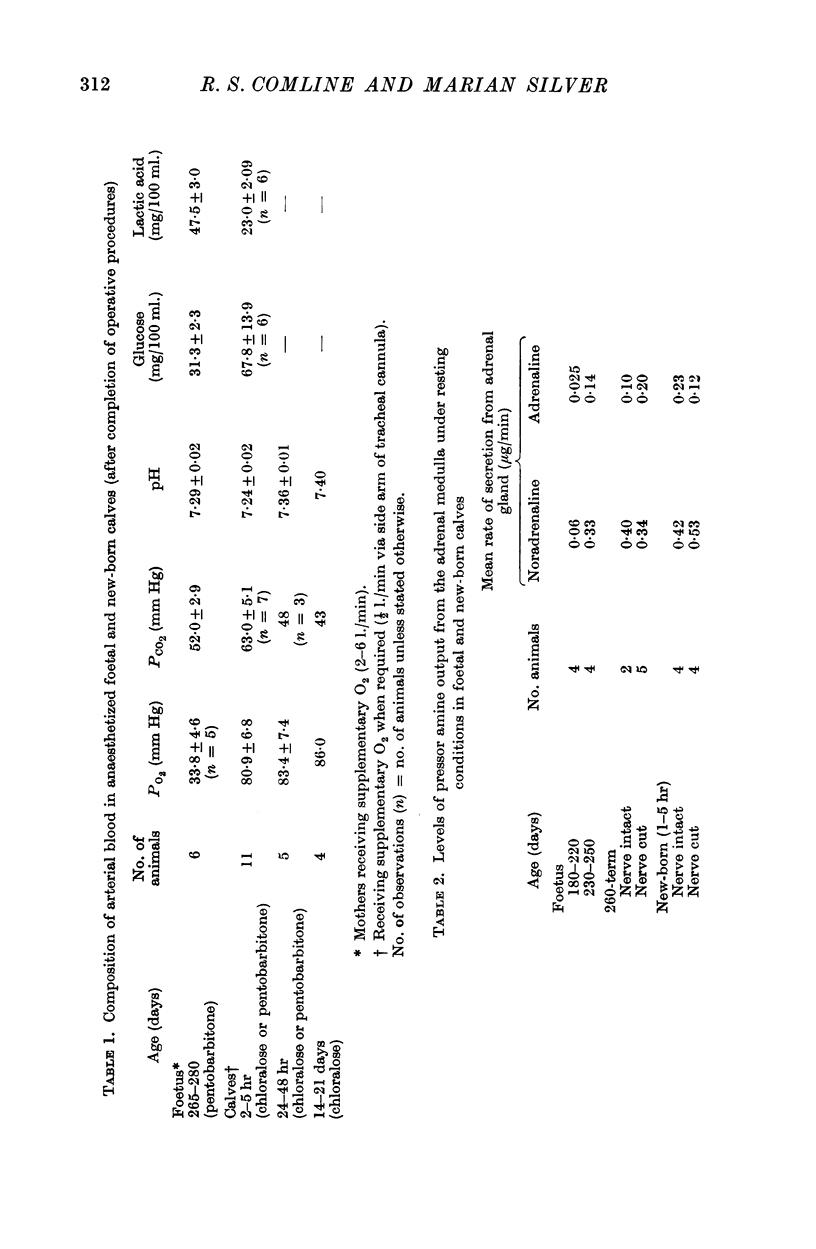
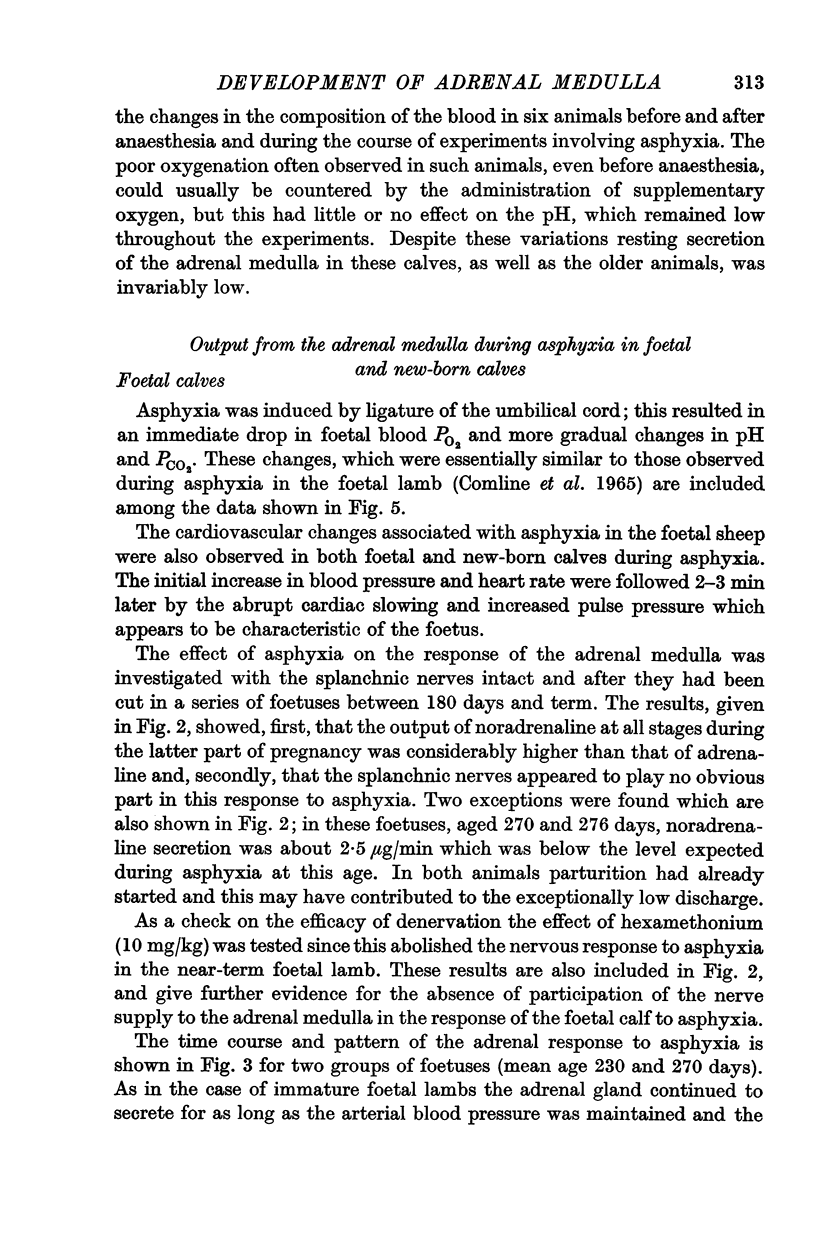
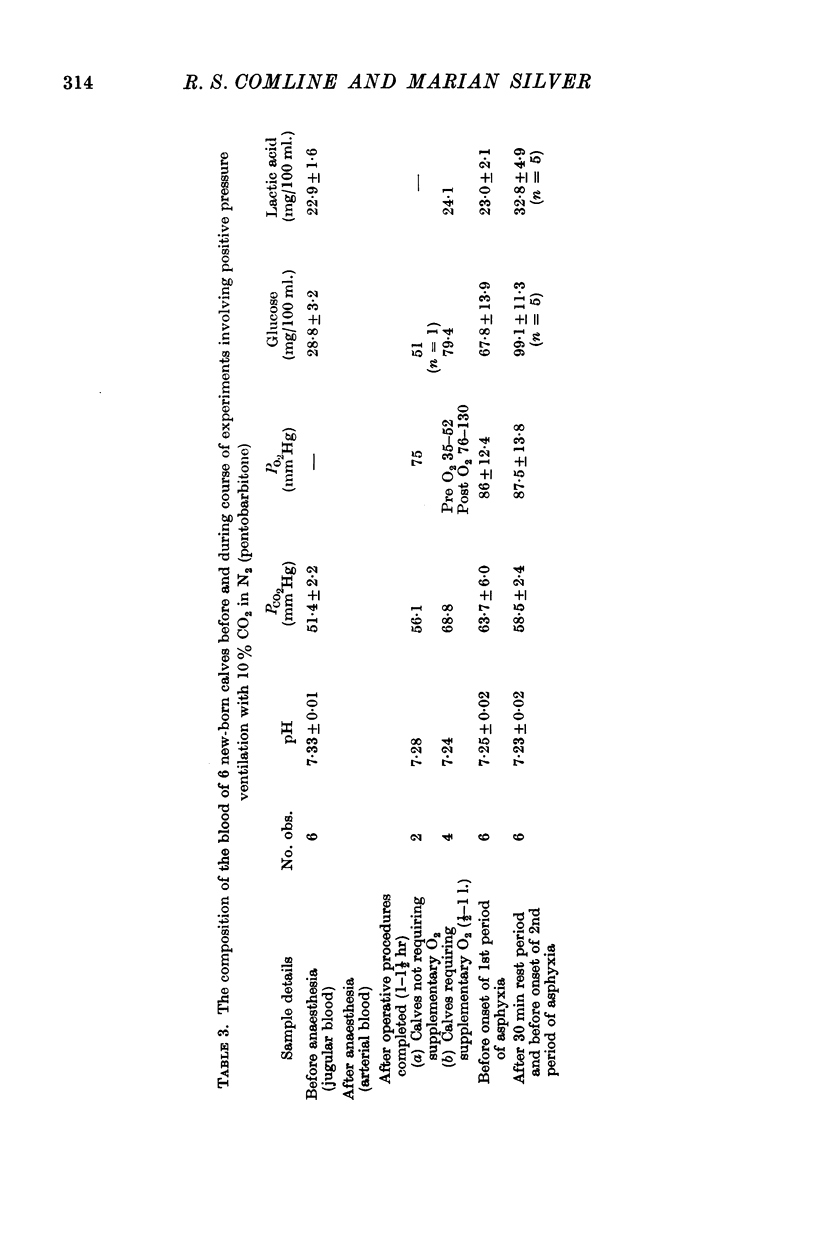
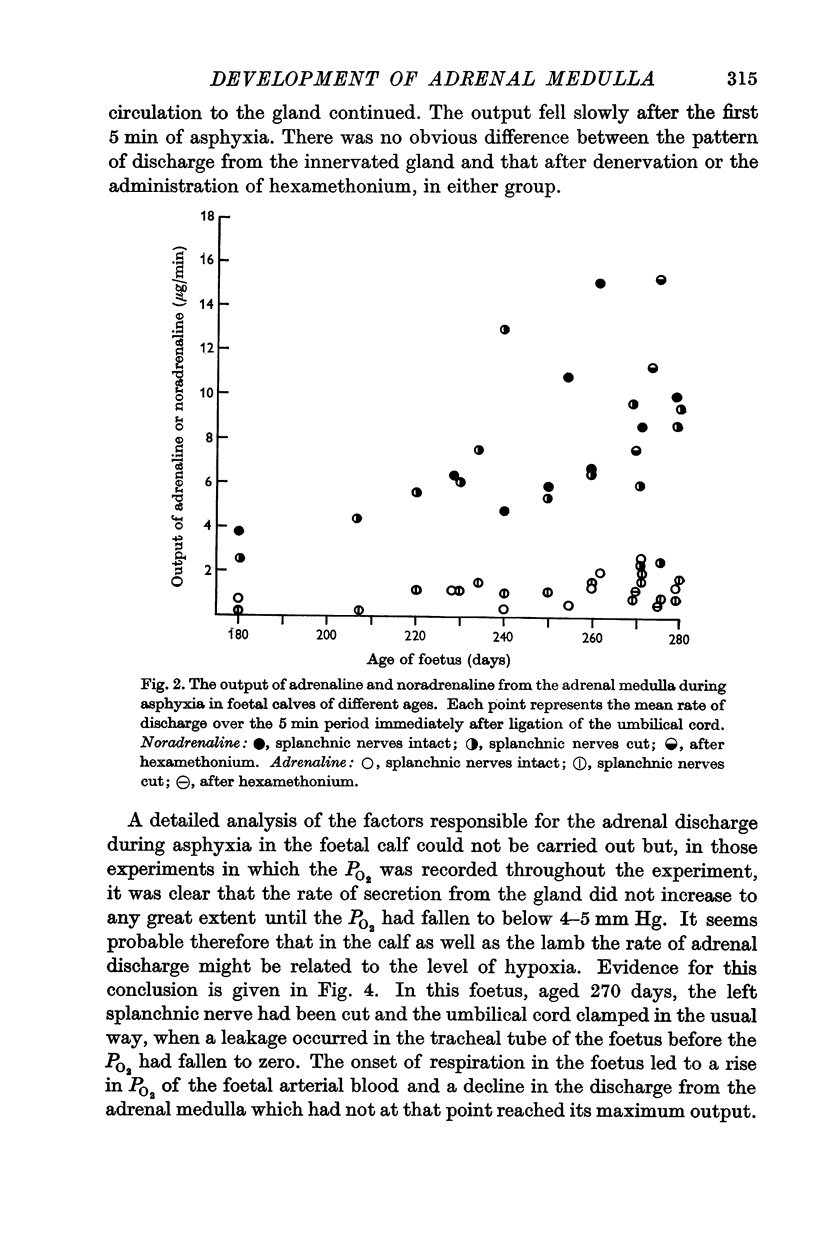
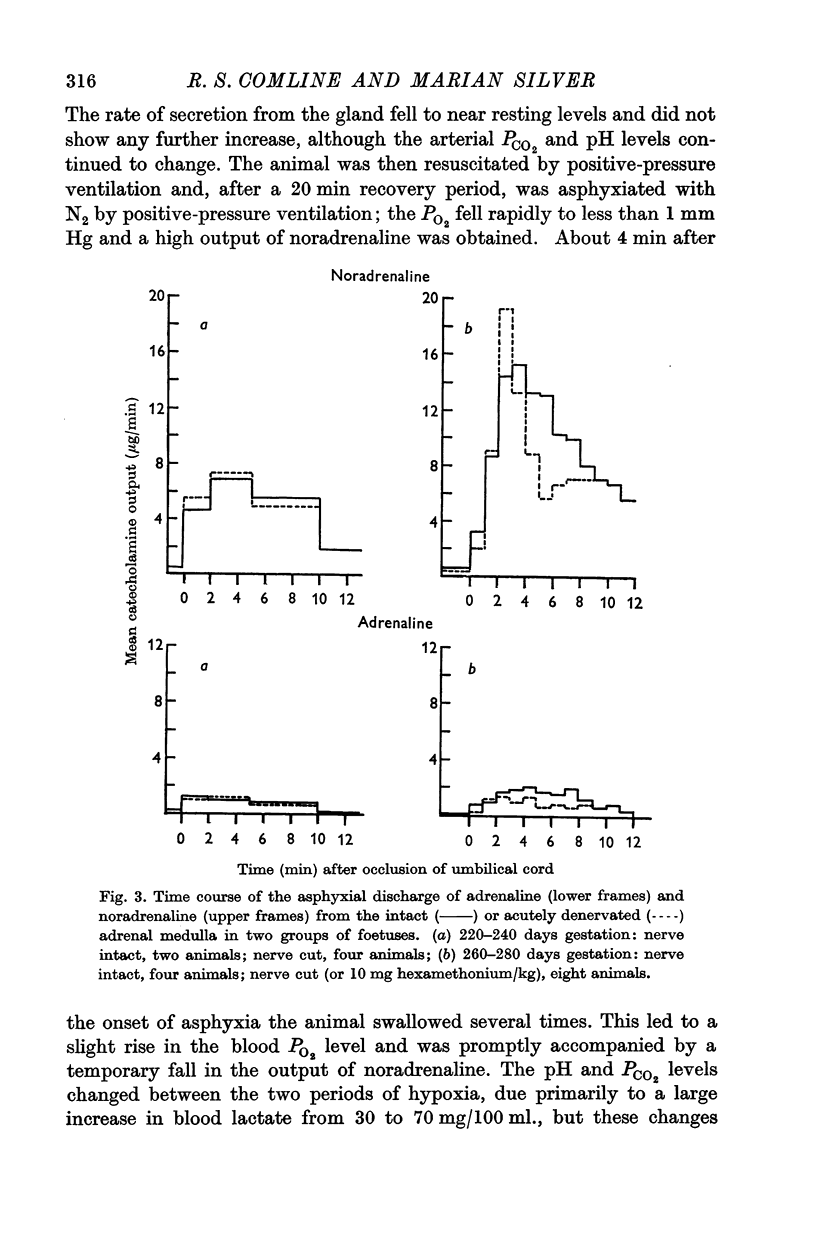
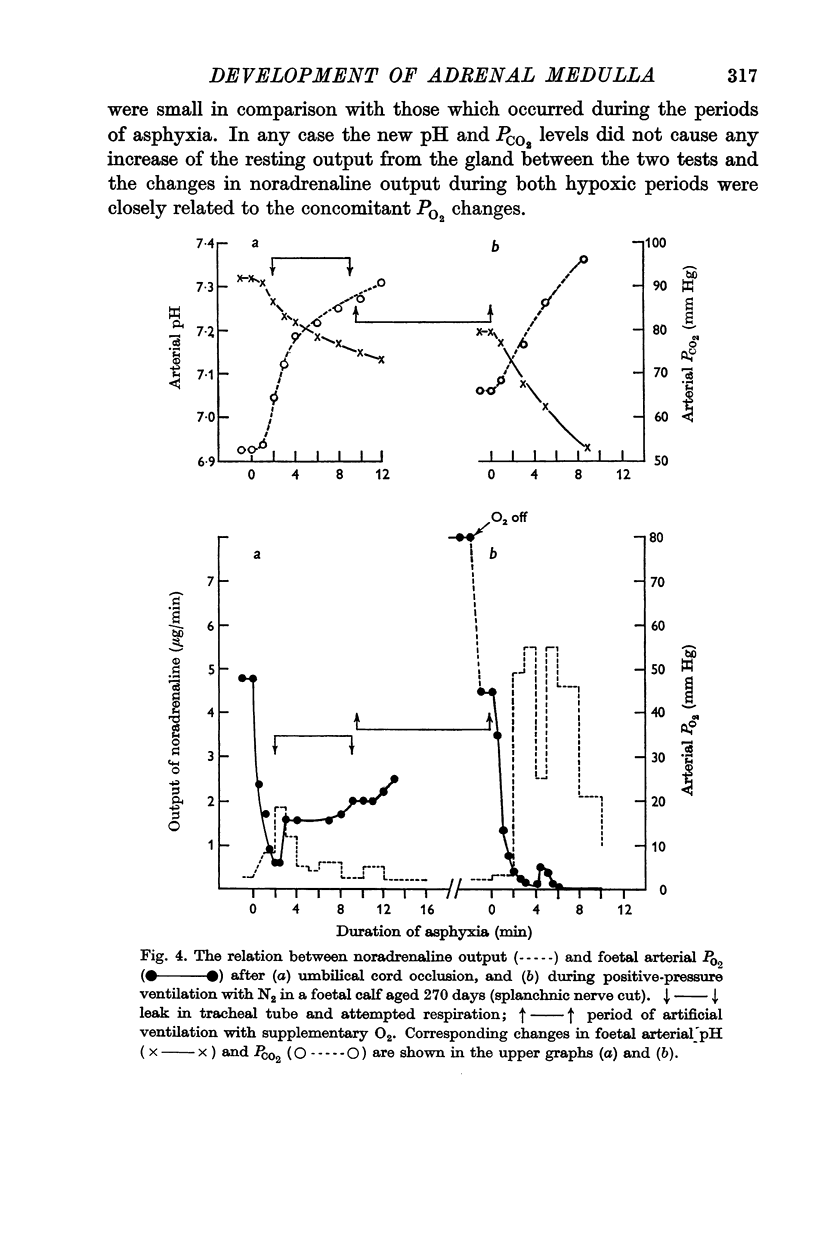
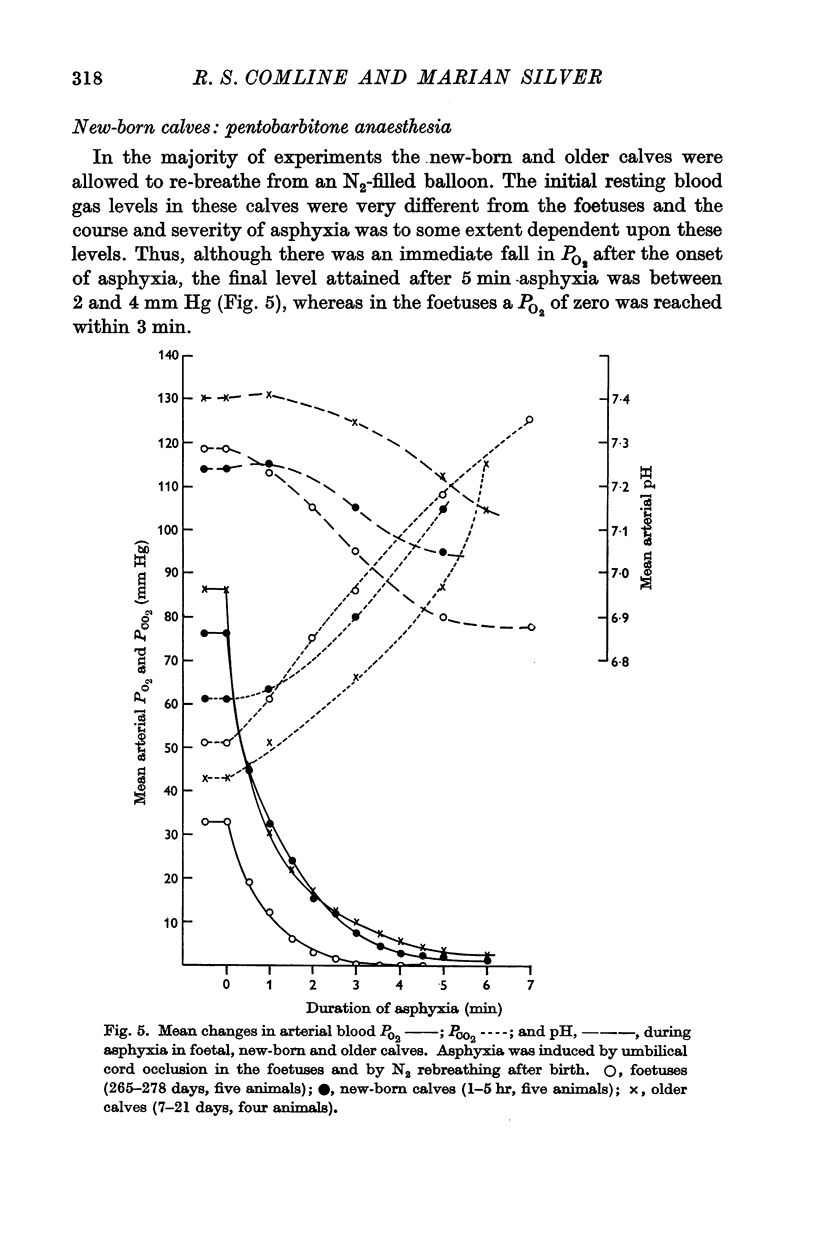
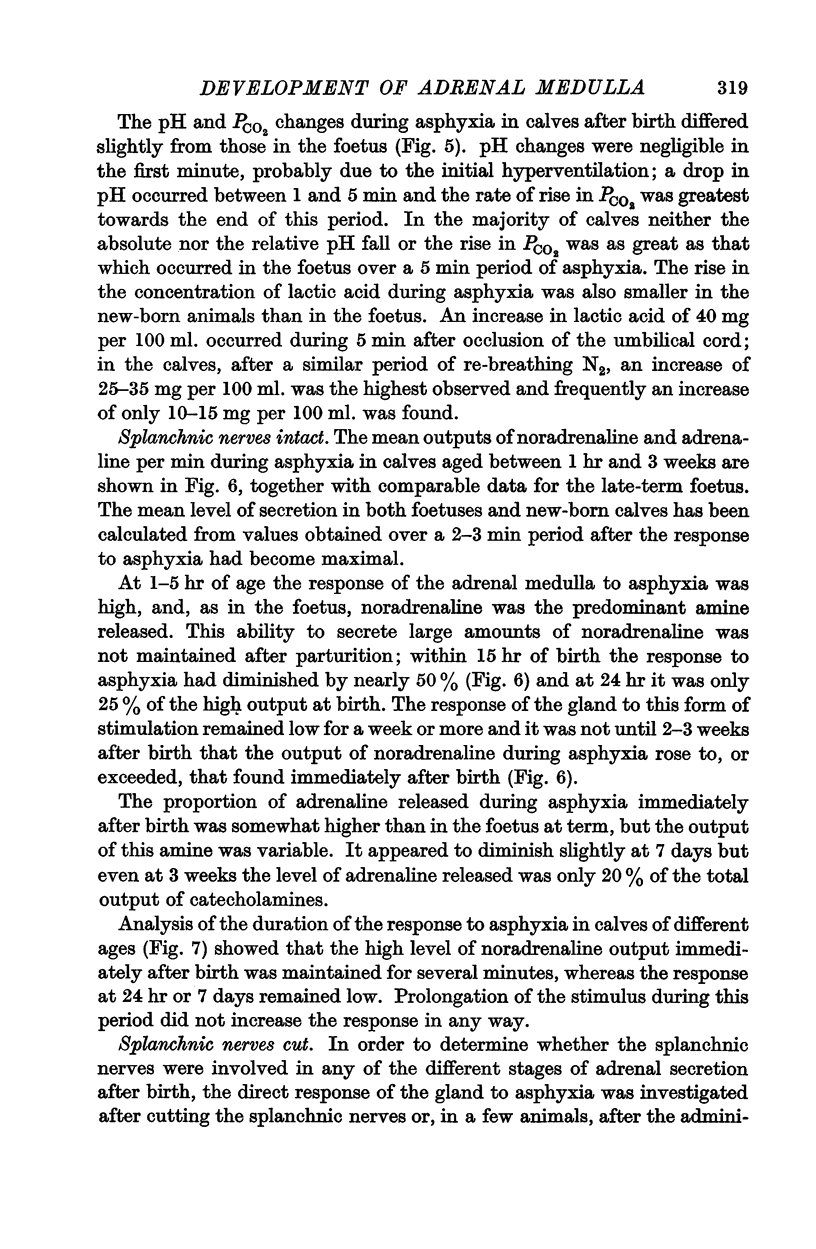

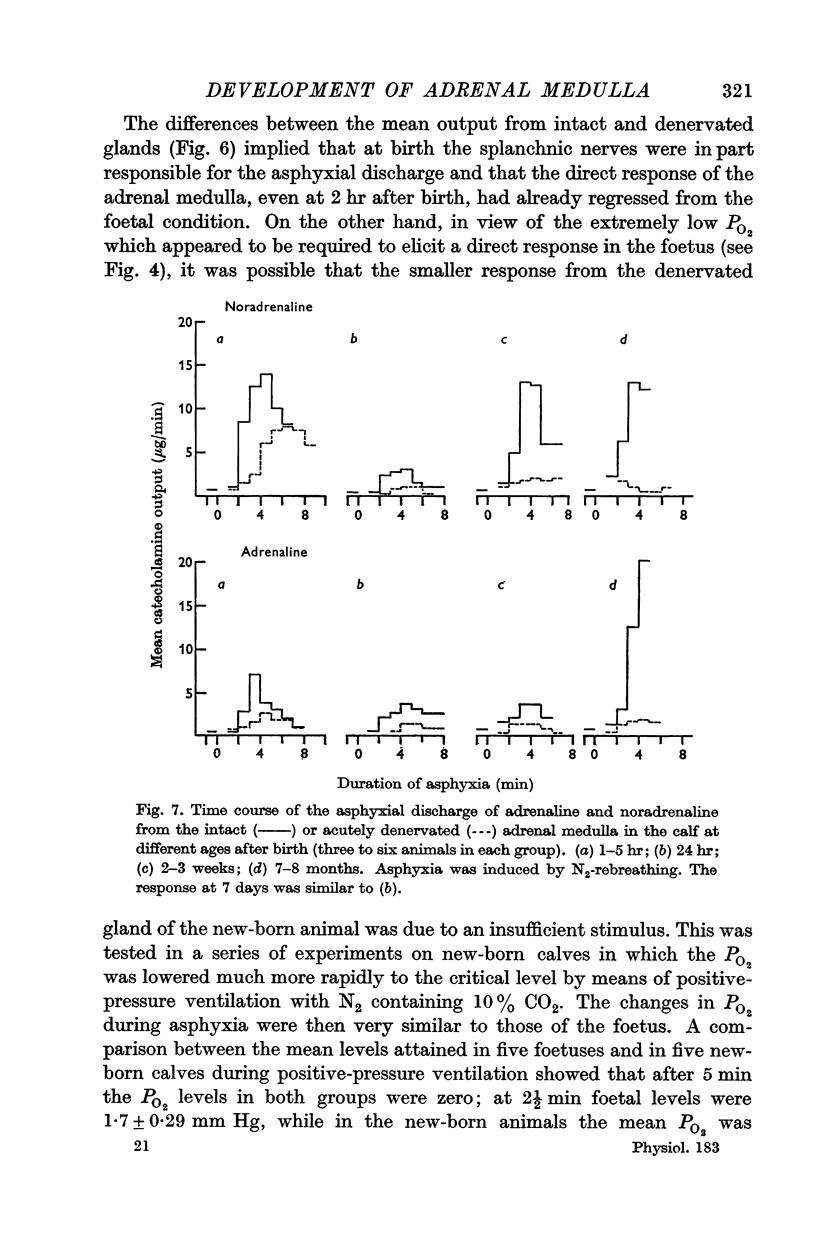
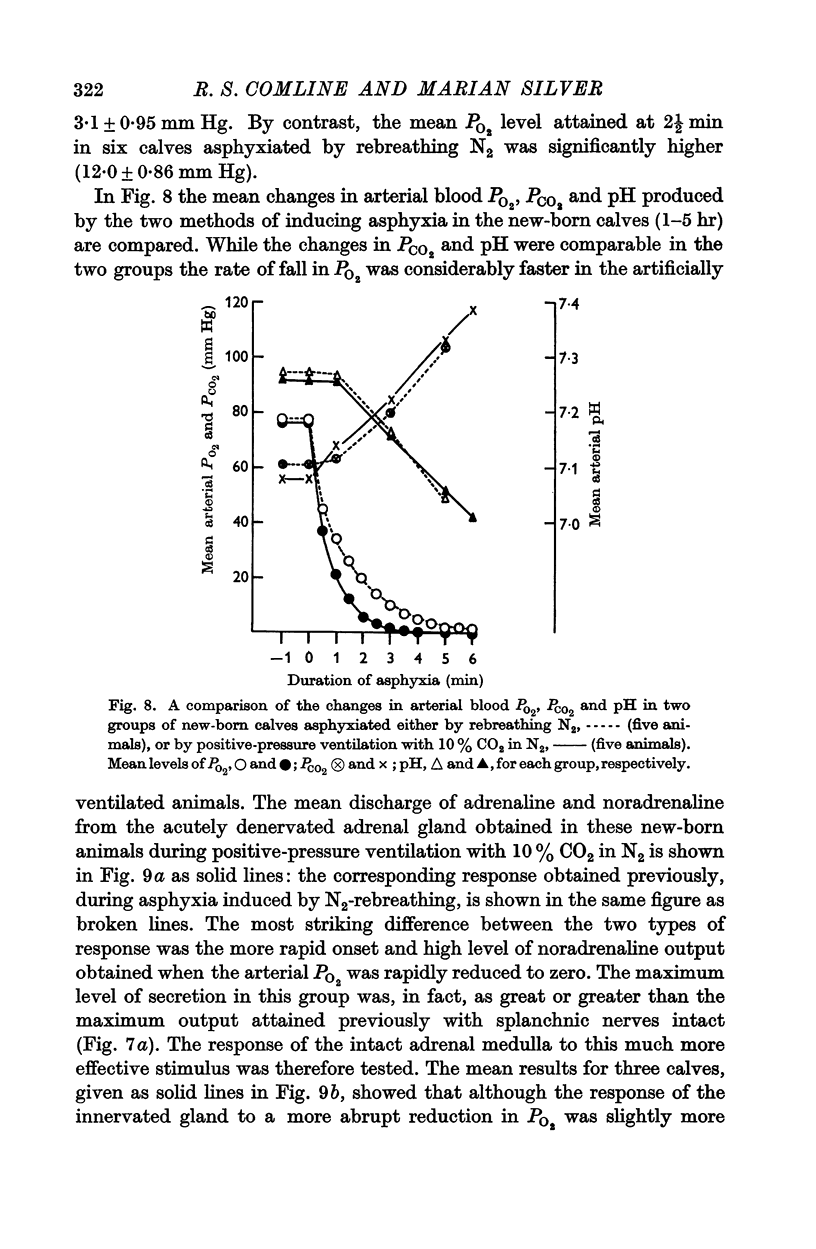
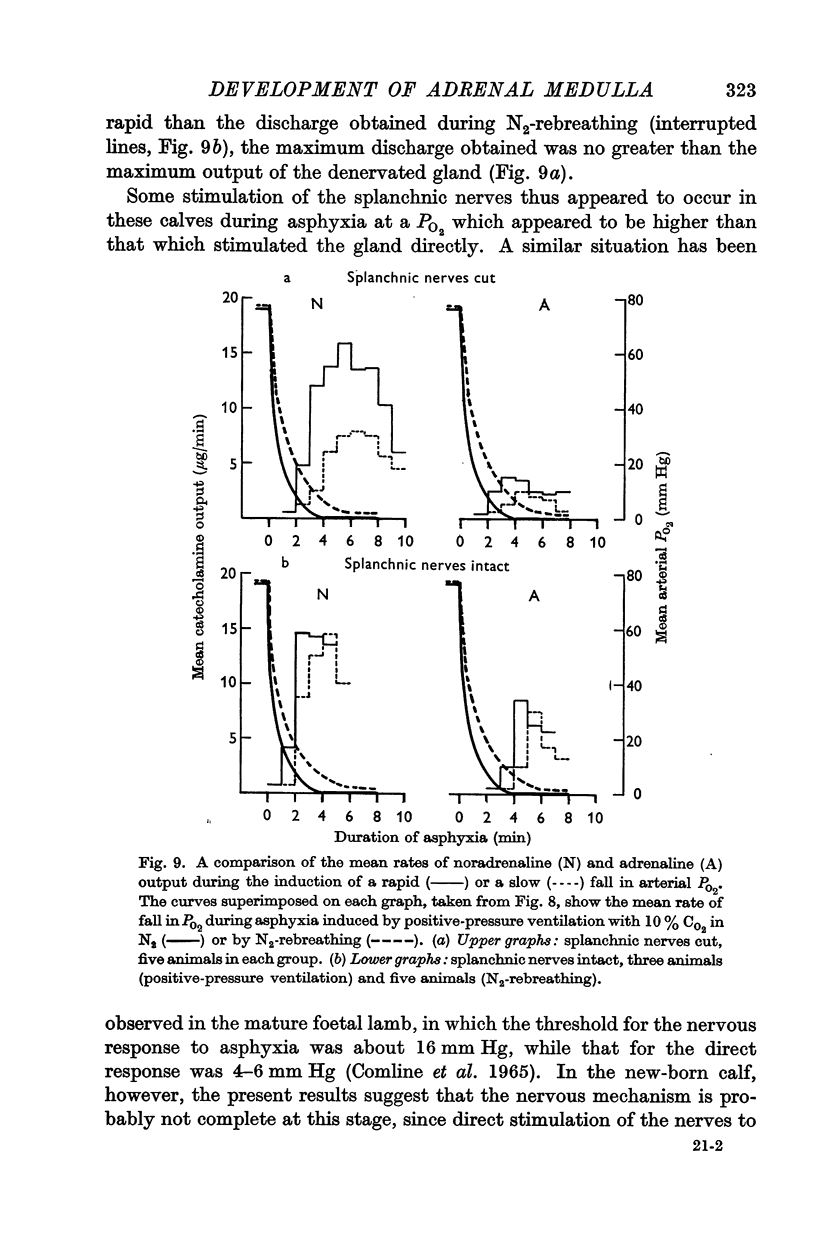
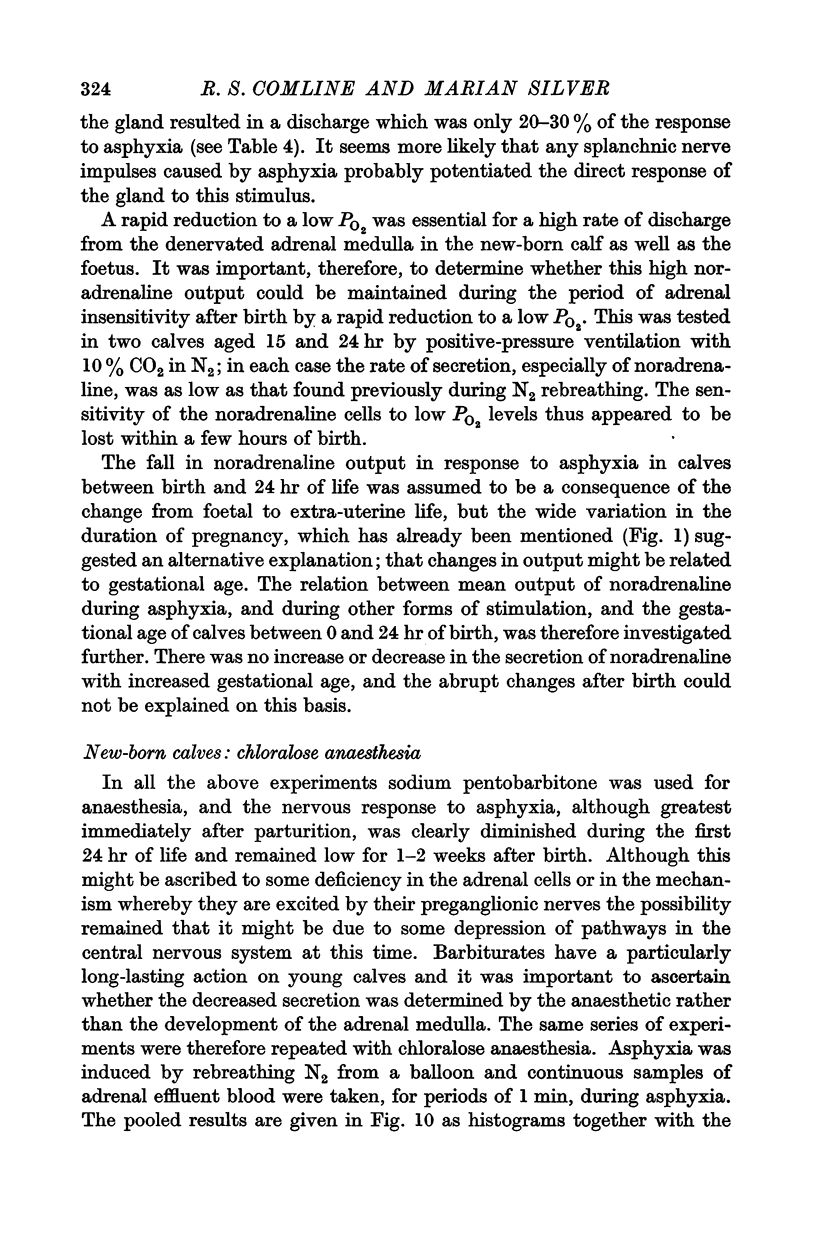


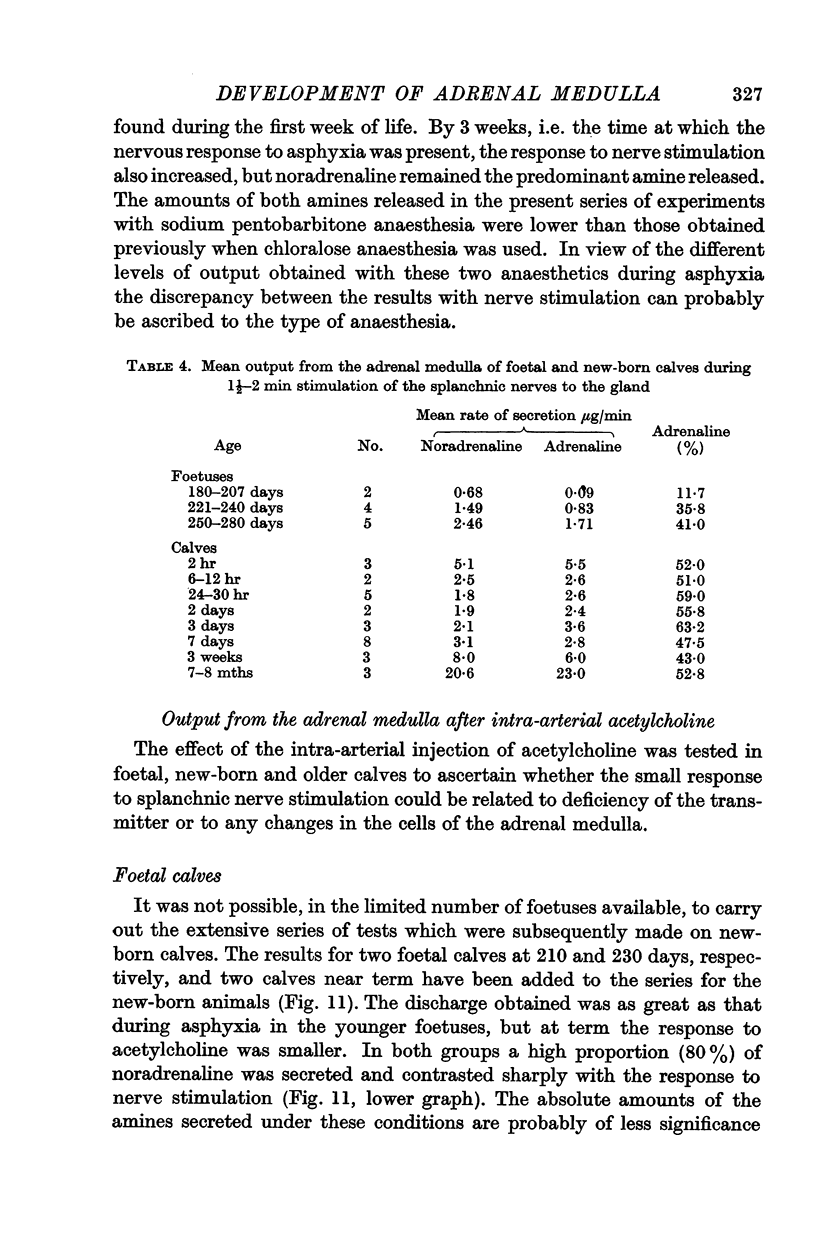

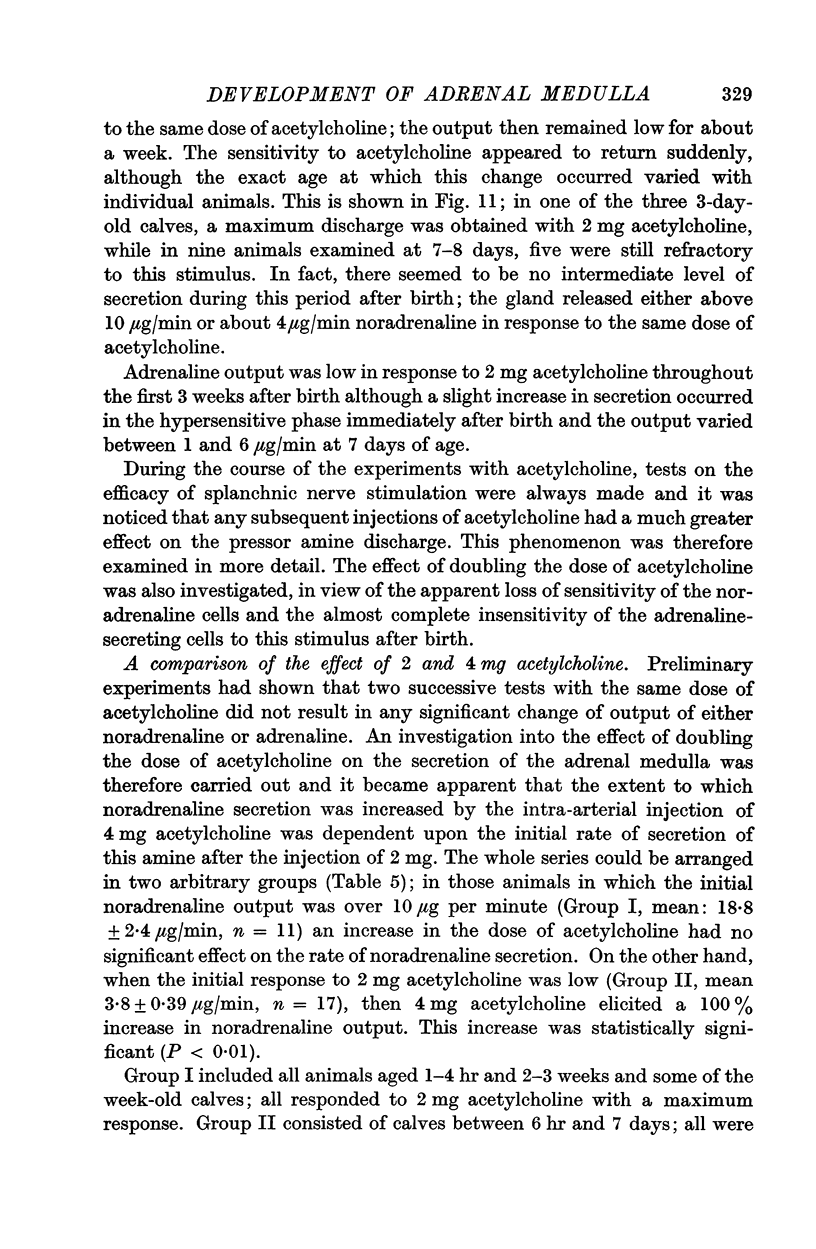
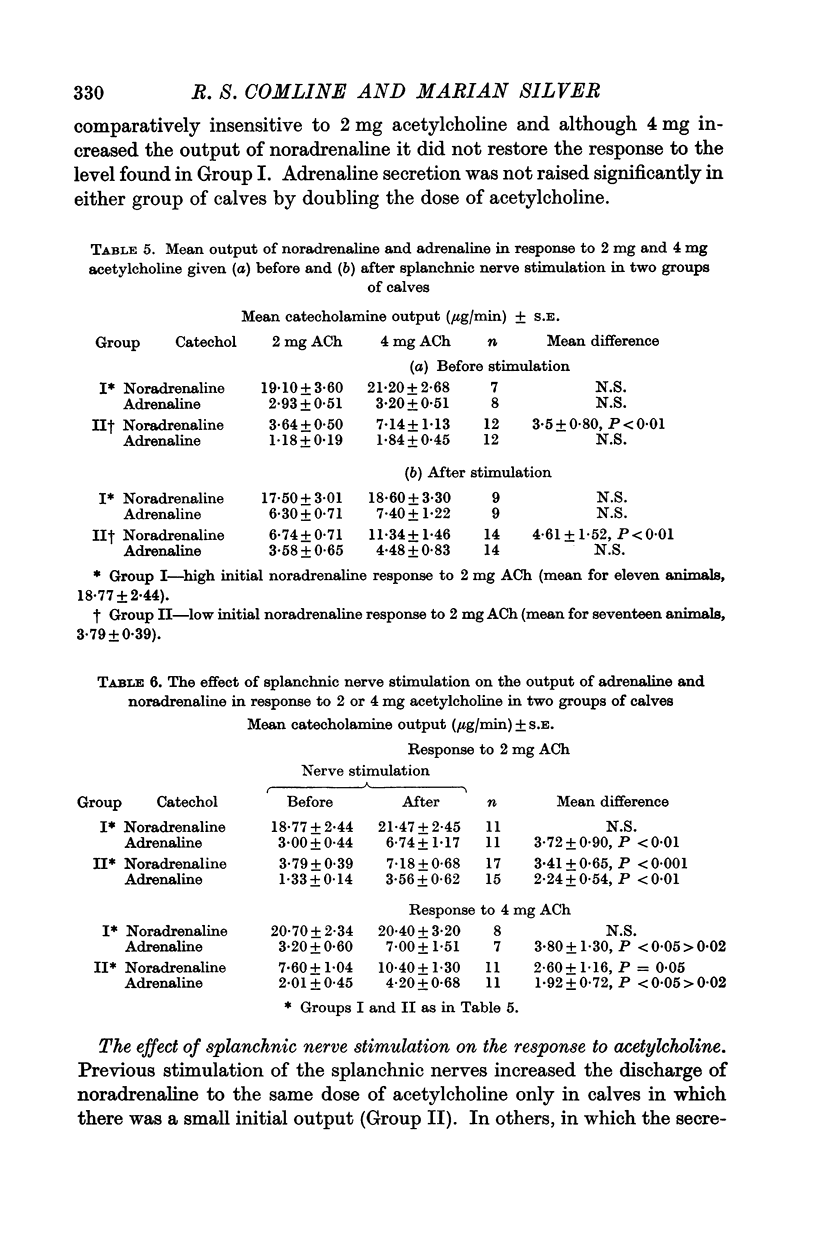
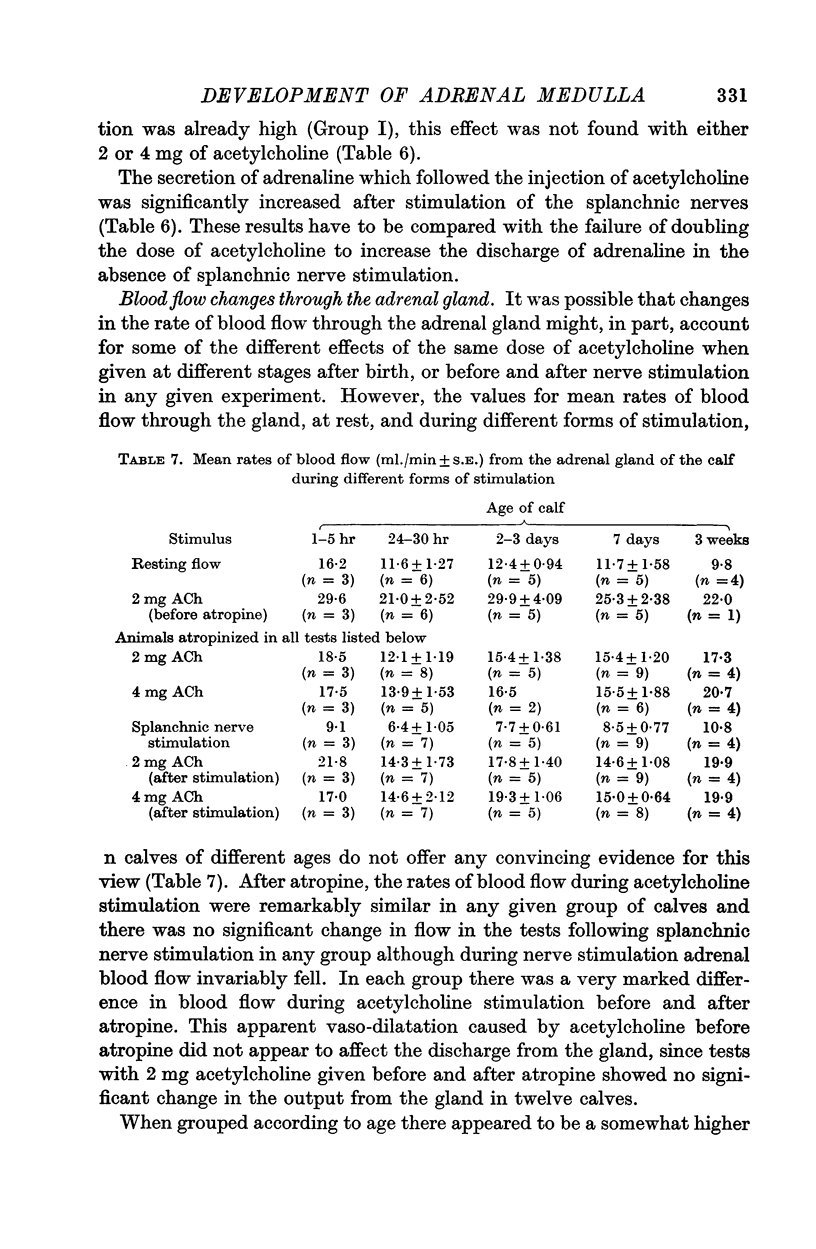
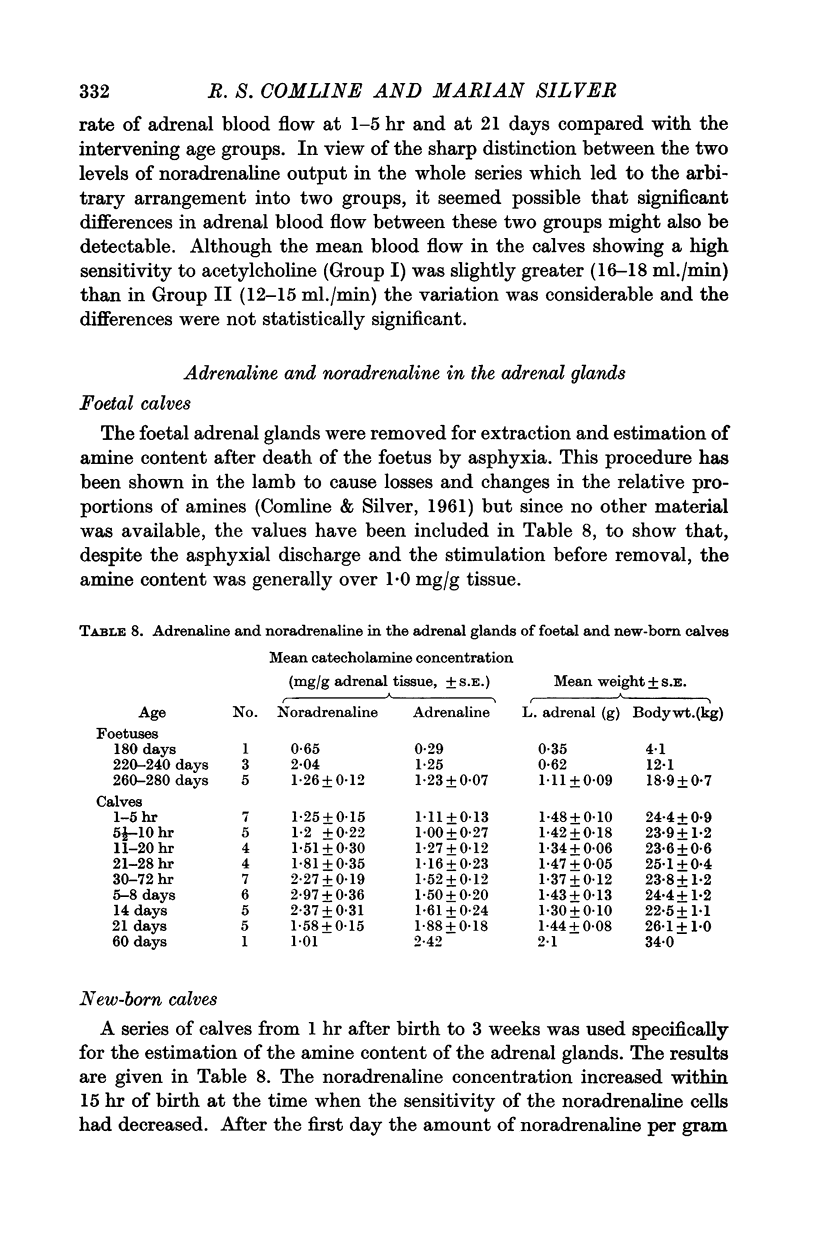
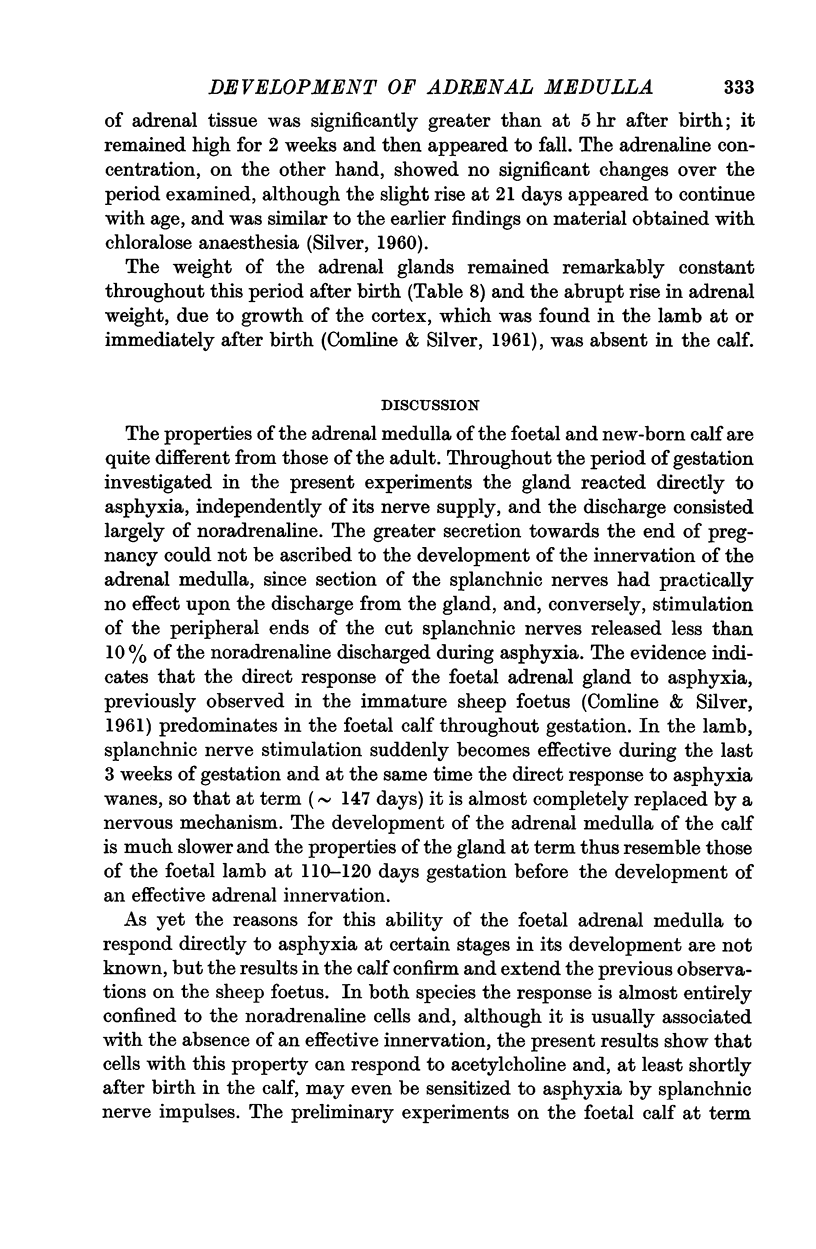
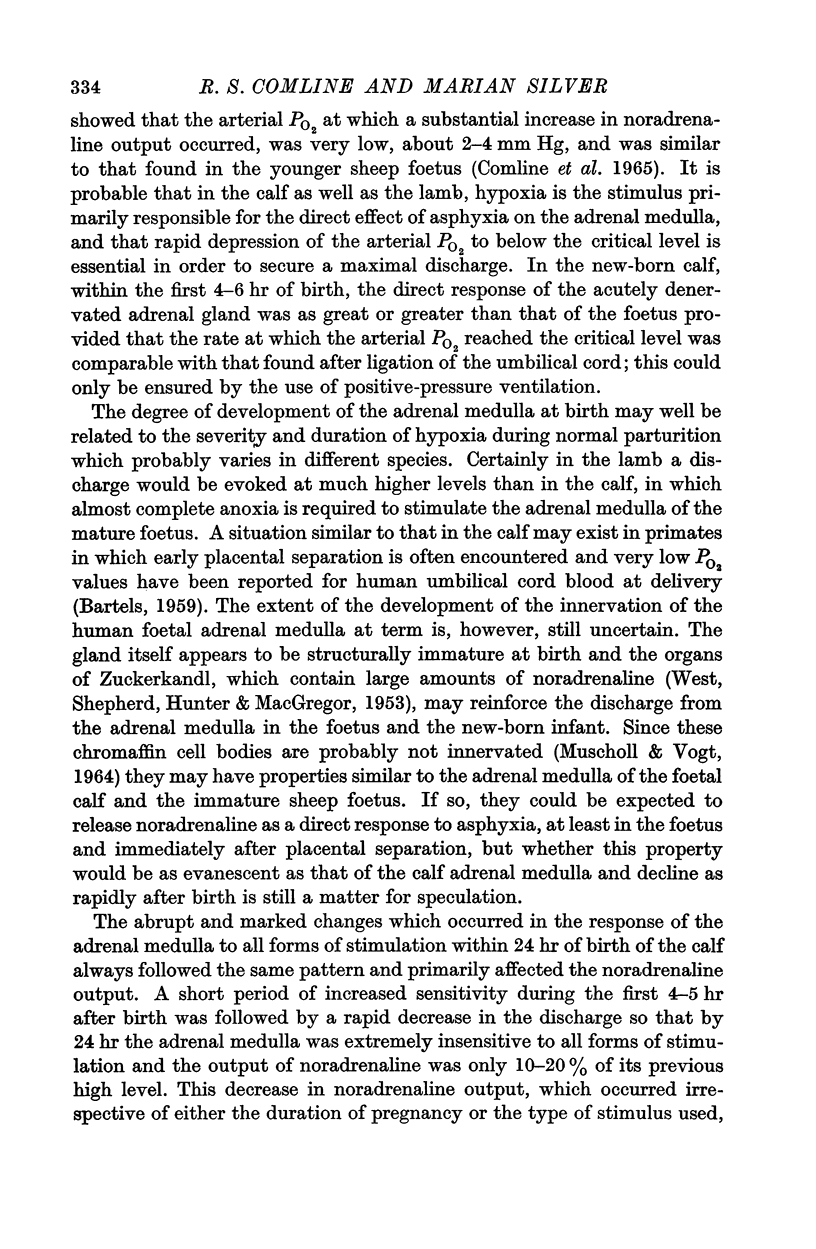
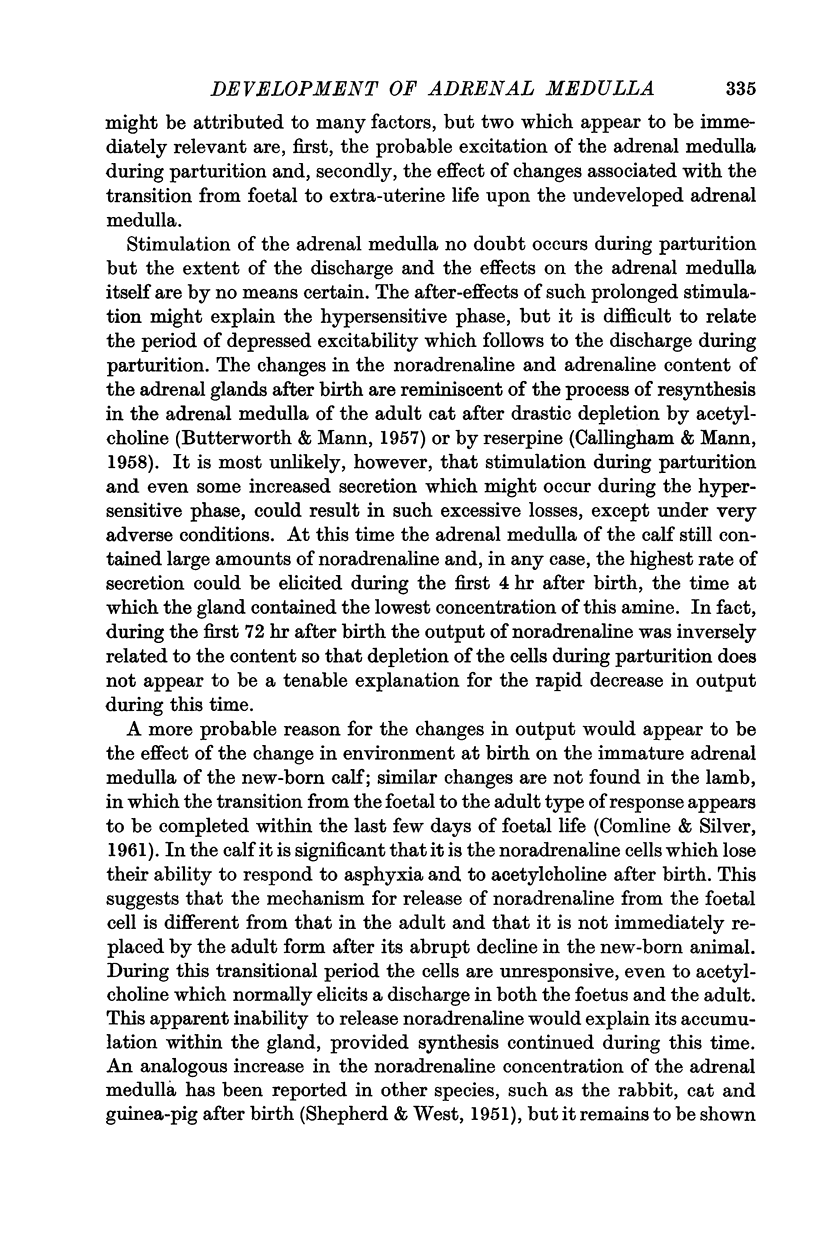
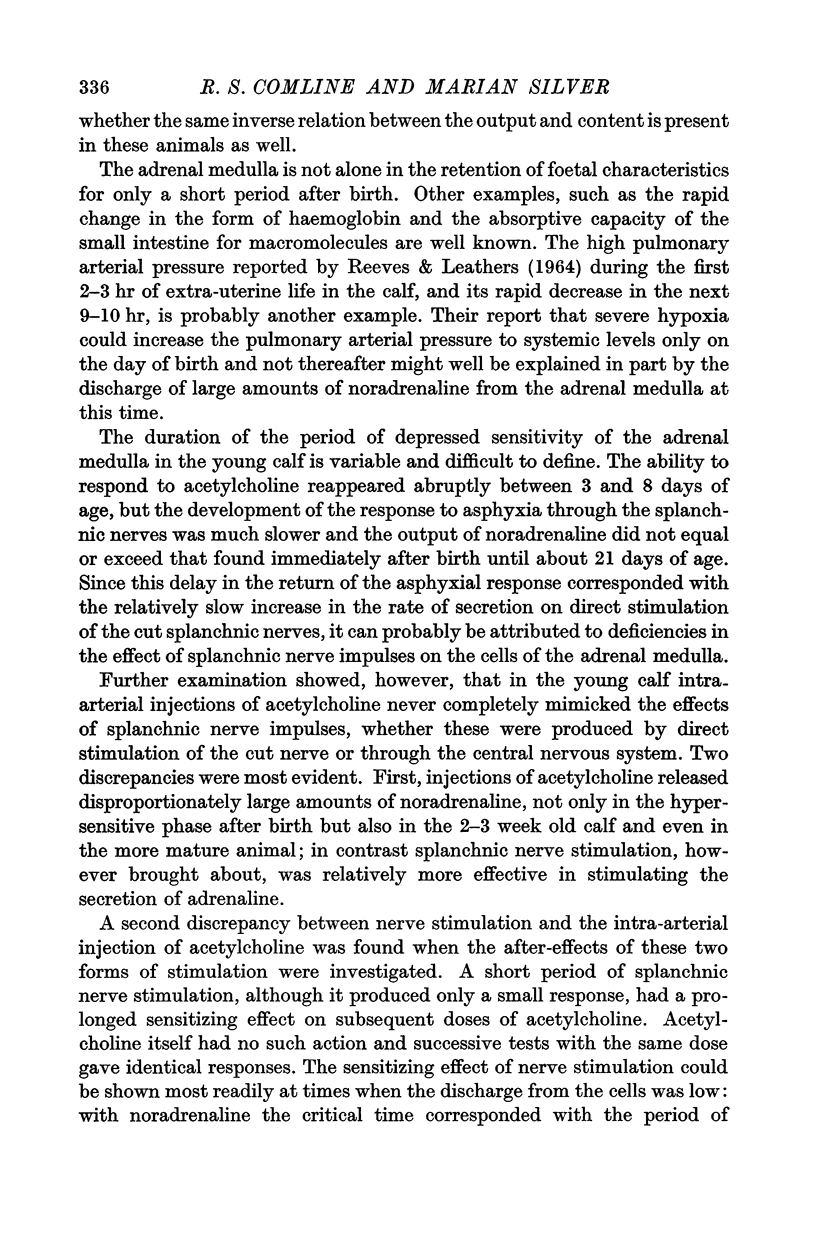
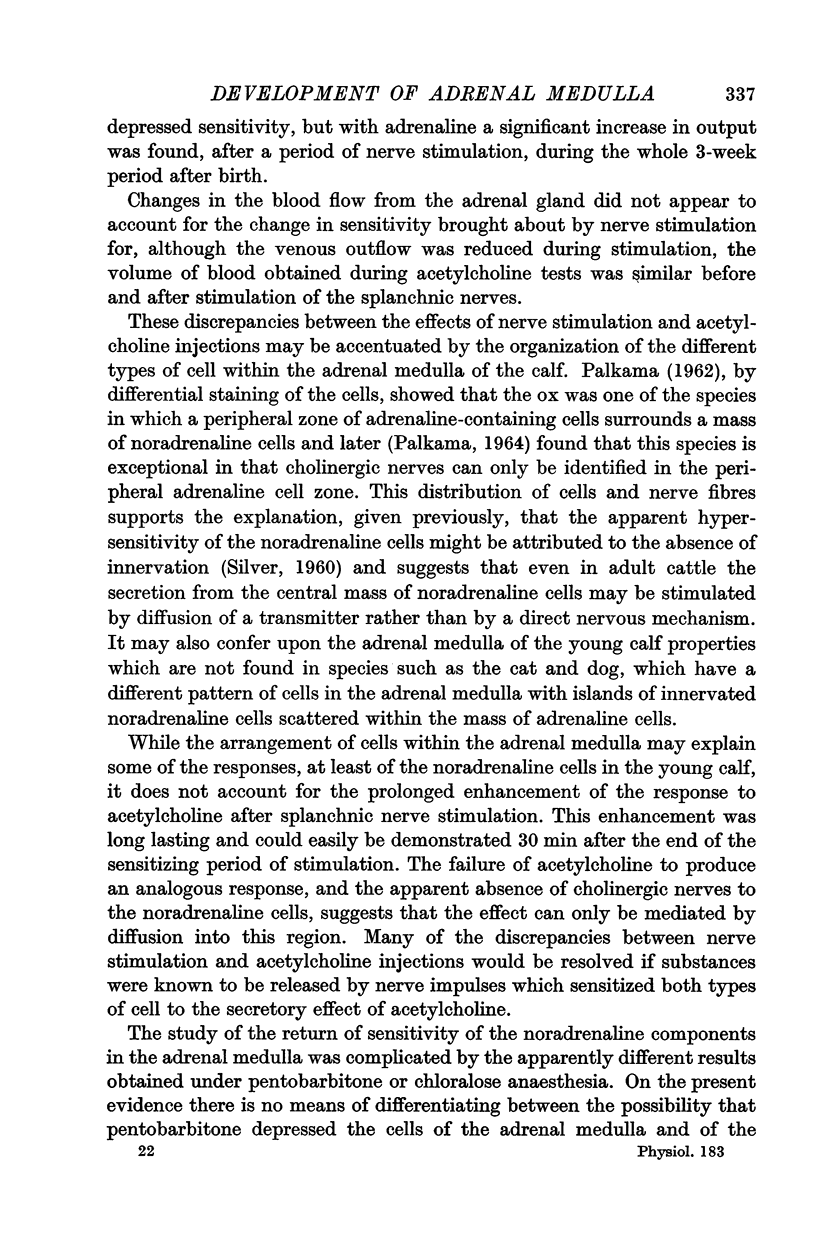
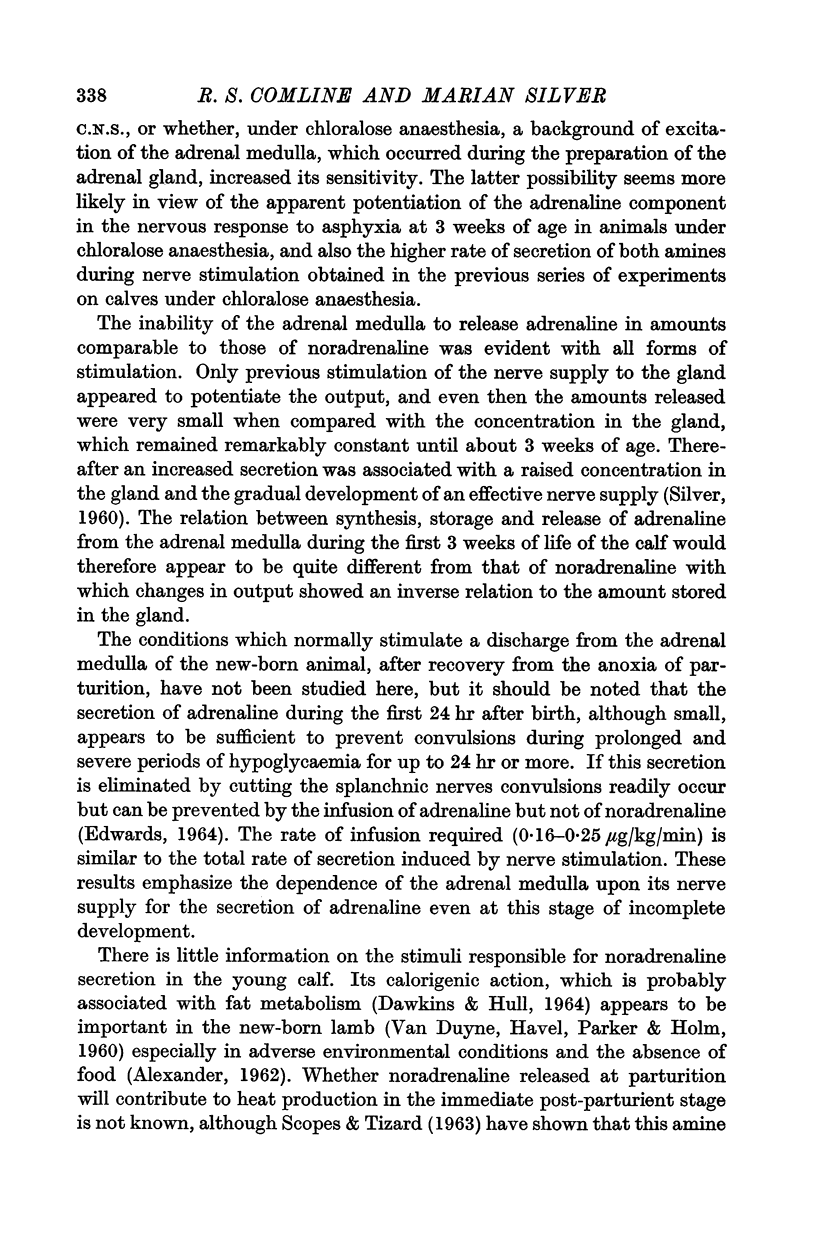
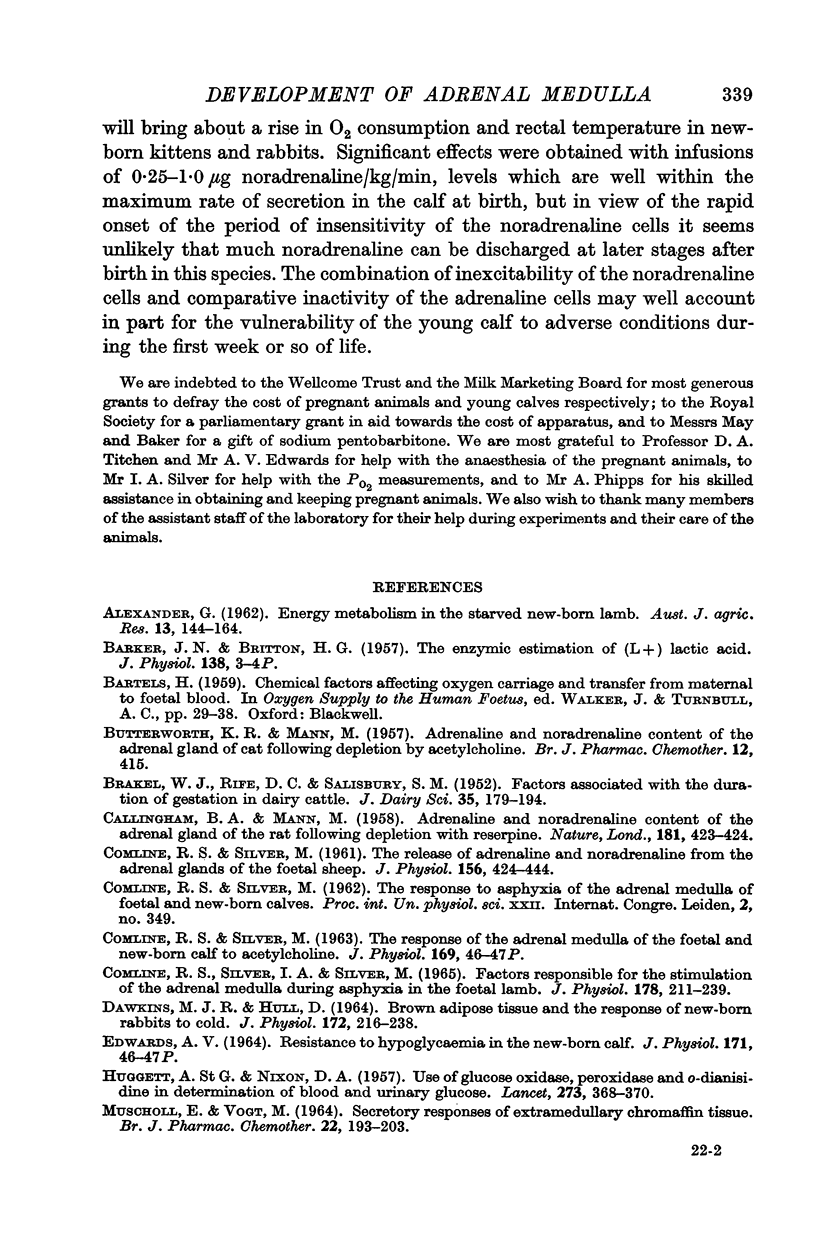

Selected References
These references are in PubMed. This may not be the complete list of references from this article.
- BUTTERWORTH K. R., MANN M. The adrenaline and noradrenaline content of the adrenal gland of the cat following depletion by acetylcholine. Br J Pharmacol Chemother. 1957 Dec;12(4):415–421. doi: 10.1111/j.1476-5381.1957.tb00158.x. [DOI] [PMC free article] [PubMed] [Google Scholar]
- CALLINGHAM B. A., MANN M. Adrenaline content of the adrenal gland of the rat following depletion with reserpine. Nature. 1958 Feb 8;181(4606):423–424. doi: 10.1038/181423a0. [DOI] [PubMed] [Google Scholar]
- COMLINE R. S., SILVER I. A., SILVER M. FACTORS RESPONSIBLE FOR THE STIMULATION OF THE ADRENAL MEDULLA DURING ASPHYXIA IN THE FOETAL LAMB. J Physiol. 1965 May;178:211–238. doi: 10.1113/jphysiol.1965.sp007624. [DOI] [PMC free article] [PubMed] [Google Scholar]
- COMLINE R. S., SILVER M. The release of adrenaline and noradrenaline from the adrenal glands of the foetal sheep. J Physiol. 1961 May;156:424–444. doi: 10.1113/jphysiol.1961.sp006685. [DOI] [PMC free article] [PubMed] [Google Scholar]
- DAWKINS M. J., HULL D. BROWN ADIPOSE TISSUE AND THE RESPONSE OF NEW-BORN RABBITS TO COLD. J Physiol. 1964 Aug;172:216–238. doi: 10.1113/jphysiol.1964.sp007414. [DOI] [PMC free article] [PubMed] [Google Scholar]
- HUGGETT A. S., NIXON D. A. Use of glucose oxidase, peroxidase, and O-dianisidine in determination of blood and urinary glucose. Lancet. 1957 Aug 24;273(6991):368–370. doi: 10.1016/s0140-6736(57)92595-3. [DOI] [PubMed] [Google Scholar]
- MUSCHOLL E., VOGT M. SECRETORY RESPONSES OF EXTRAMEDULLARY CHROMAFFIN TISSUE. Br J Pharmacol Chemother. 1964 Feb;22:193–203. doi: 10.1111/j.1476-5381.1964.tb01559.x. [DOI] [PMC free article] [PubMed] [Google Scholar]
- REEVES J. T., LEATHERS J. E. CIRCULATORY CHANGES FOLLOWING BIRTH OF THE CALF AND THE EFFECT OF HYPOXIA. Circ Res. 1964 Oct;15:343–354. doi: 10.1161/01.res.15.4.343. [DOI] [PubMed] [Google Scholar]
- SCOPES J. W., TIZARD J. P. The effect of intravenous noradrenaline on the oxygen consumption of new-born mammals. J Physiol. 1963 Feb;165:305–326. doi: 10.1113/jphysiol.1963.sp007058. [DOI] [PMC free article] [PubMed] [Google Scholar]
- SHEPHERD D. M., WEST G. B. Noradrenaline and the suprarenal medulla. Br J Pharmacol Chemother. 1951 Dec;6(4):665–674. doi: 10.1111/j.1476-5381.1951.tb00678.x. [DOI] [PMC free article] [PubMed] [Google Scholar]
- SILVER M. The output of adrenaline and noradrenaline from the adrenal medulla of the calf. J Physiol. 1960 Jun;152:14–29. doi: 10.1113/jphysiol.1960.sp006466. [DOI] [PMC free article] [PubMed] [Google Scholar]
- WEST G. B., SHEPHERD D. M., HUNTER R. B., MACGREGOR A. R. The function of the organs of Zuckerkandl. Clin Sci. 1953 Nov;12(4):317–325. [PubMed] [Google Scholar]


